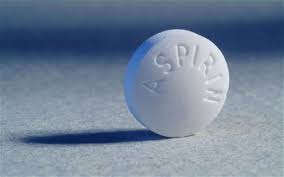Aspirin is a “Wonder Drug” (I know that because it says so on my bottle). In my case the wonder is why we don’t use more of it for people with diabetes (not only more often, but more drug in each dose).
We know that people with diabetes are ‘hypercoagulable’ having increased platelet reactivity as well as increases in several coagulation factors likely due to constant low-grade damage to vascular endothelium by ‘glucose toxicity’. Aspirin therapy has been a topic of a multitude of studies over many years. There are meta-analyses and even mega-aggregation meta-analyses, and unfortunately they often come to different conclusions (!) Several things tend to stand out. Studies have suggested that low dose aspirin works in secondary prevention, and there are mixed results in primary prevention studies. In most of these studies, individuals with diabetes are mixed in the overall patient population, and thus their results in primary and secondary prevention are obfuscated to some extent when the collective results are published.

Several studies have suggested that people with diabetes have ‘aspirin resistance’ which may be a combination of hypercoagulability and lack of effect of lower doses in some patients. A recent study in patients with diabetes without known cardiovascular disease (Bethel, Diabetic Medicine 2016;33:224) suggest that doses greater than 100 mg/day (either 200 mg in one dose or 100 mg twice daily) have a greater effect on platelet reactivity than 100 mg/day, and there other some evidence supporting a rough dose response relationship for the antiplatelet effect, the degree depending on the assay you use (Gurbel, et al. Circulation. 2007 115:3156).
Some meta-analyses will conclude that larger doses of aspirin are associated with more significant rates of major bleeding. One of the references often cited (Yu, et al. JACC Intervention 2012;5:1231) points out the importance of digging deeper into the data, since the authors concluded: “In patients with ST-segment elevation myocardial infarction undergoing primary PCI, discharge on high-dose rather than low-dose aspirin may increase the rate of major bleeding without providing additional ischemic benefit” despite the fact that twice as many individuals in the ‘high dose’ aspirin group (>200 mg/da) were taking a concomitant thienopyridine compared with the ‘low dose’ group (<200 mg/da). Many studies related to bleeding complications have other methodological issues as well. Clearly aspirin has a tendency to reduce blood coagulation, which is why we give it in the first place. There are studies that found increased major bleeding that was (kind of) dose related, other studies that did not find that, and yet more studies where only minor bleeding episodes were increased with increasing dosage. Were some of these folks individuals who shouldn’t have been given it in the first place? Are the differences in these studies clinically significant? Try wading through some of them, and you will quickly get frustrated by what information is NOT in the studies.
As you know, current aspirin recommendations are 75-162 mg/da (ADA) in subgroups for secondary prevention and for primary prevention only if your CV Risk is >10%…but with all the disagreements on which risk engine is the best, and clear differences between them…what’s a pharmacist to do? Our knowledge base is hostage to a dosage no-mans land where studies have suggested that 100 mg /day or more may be better and more predictable vis-à-vis risk reduction, but if you only have access to the 81 mg tablets, then you give two tablets per day at least. If 200 mg/day works better than 100 mg per day (see Bethel, above) then you are potentially stuck with giving either three tablets of 81 mg or a full 325 mg tablet. The cost differences alone are significant for diabetes patients. What is sorely needed is a study on only patients with diabetes, with multiple dosages of aspirin, with concomitant measures of coagulability [there are several and none seems preferable], stratified by risk such as the stratification used in ACCORD, and using the ‘best’ risk engine…whatever that one is! Then and only then will the multitude of heterogeneous recommendations, negative and positive findings related to effectiveness and side effects be put to rest. In the meantime, a lot of people take aspirin (Williams, et al. Journal of Gen Intern Med 2015;48:501) despite their use being classified as “inappropriate” (Hira, et al. JACC 2015;65:111).
There are other benefits to taking aspirin regularly including lower rates of colorectal cancer (Cao, et al JAMA Oncology 2016 _online Mar 3), and those occur more commonly in patients with type 2 diabetes (Guraya, World J Gastroenterol. 2015;21:6026). Of course you should not give aspirin to someone with a bleeding disorder…we all know that. Me, I’m taking a full aspirin every day, inappropriate or not, and I tell my diabetes patients to do the same!